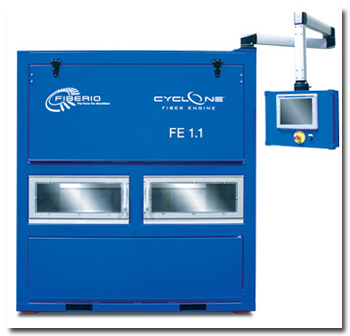For decades, textile waste was just discarded in the trash. Only a few smart people recognized that
textile waste or used clothing were more than just garbage. The legend says that the Warner
Brothers, immigrants from Poland, and other Hollywood tycoons made their first fortunes in the rag
business.
Some 25 years back, the textile industry realized that textile waste is a source of
secondary raw material. In the 1990s, the author visited near Valencia, Spain, a Spanish recycler,
Alcocertex, which used machinery from France-based Laroche S.A. to process more than 200 metric
tons of textile waste per day! Even in those days, textile waste was already a sought-after
material, and the recycler was buying textile waste from all over Europe, and even from overseas.
International Organization
After World War II, the international recycling industry realized the need for an
organization that would support the needs of the growing recycling industry. For this reason, the
Bureau of International Recycling (BIR) was founded in 1948 to be the first federation to promote
the interests of the global recycling industry. The non-profit organization is headquartered in
Brussels, Belgium.
Reasons Why
In its mission statement, the BIR states that it “promotes materials recycling and
facilitates free and fair trade of recyclables in a sustainable and competitive world economy.” The
organization “offers its members timely information about the international recycling markets,
their legislative context and the latest technologies.” Commodity divisions include ferrous metals,
nonferrous metals, paper and textiles.
A Big Business
In the last 20 years or so, collecting textile waste has become big business, and one can
read stories here and there about some illegal actions. BIR experts estimate that of all textiles
collected, about half are reused and half are recycled. Sustainability is one of the key words
today, and recycling is a truly sustainable business. As an example, the BIR calculates that if
every one of the United Kingdom’s 60 million citizens would buy one reclaimed woolen garment per
year, 1,686 million liters of water and 480 metric tons of chemical dyestuffs on average would be
saved. These are impressive numbers.
The other side of the recycling coin is the fact that some 50 percent of all discarded
textiles are donated to charities. And, surprisingly or not, more than 60 percent of apparel
recovered for second-hand use is exported. In many African countries, more than 80 percent of the
people wear second-hand garments.
Illegal Actions
Because more than half of the used apparel is donated, illegal actions are occurring more
and more. That’s why the proliferation of questionable collection containers — mainly in Western
Europe and the United States — has hurt the business of established recycling companies. Olaf
Rintsch of Germany, president of the BIR Textiles Division, said in a recent roundtable meeting in
Germany that “we need to do something about this,” and that, furthermore, the market for originals
is currently “very competitive.”
The chase for raw material is provoking more illegal actions, with one result being that
sorters have not been able to build a winter inventory. Various regions in the United States have
seen 10- to 25-percent increases in prices of original second-hand material.
Furthermore, Alan Wheeler of the U.K.-based Textile Recycling Association noted, “Yields
from collections are decreasing as both legal and illegal competition for collections increases and
thefts continue.”
The situation is so serious that the U.K.’s National Fraud Intelligence Bureau initiated a
campaign nationwide to make law enforcement agencies aware of the seriousness of charity bag fraud.
Also in France, industry representatives note that thefts from containers in that country are
rising.
Environmentally Friendly
Recycling is not only an economical business, but also ecological: The BIR estimates that
“with the re-use of recovered materials in manufacturing processes or in consumption cycles, there
is a strong decrease of CO
2 [carbon dioxide] emissions compared to the production of virgin materials.” The
organization cites a 2008 University of Copenhagen study noting the environmental advantages
resulting from the collection of used clothing. According to the study, for every kilogram (kg) of
used apparel that is collected, the following reductions are realized: 3.6 kg of CO
2 emissions; 6,000 liters of water consumption; 0.3 kg of fertilizer use; and 0.2 kg of
pesticide use.
The conclusion is easy: Don’t waste your waste. It’s worth real money, and reusing or
recycling it is good for the environment.
November 1, 2011





